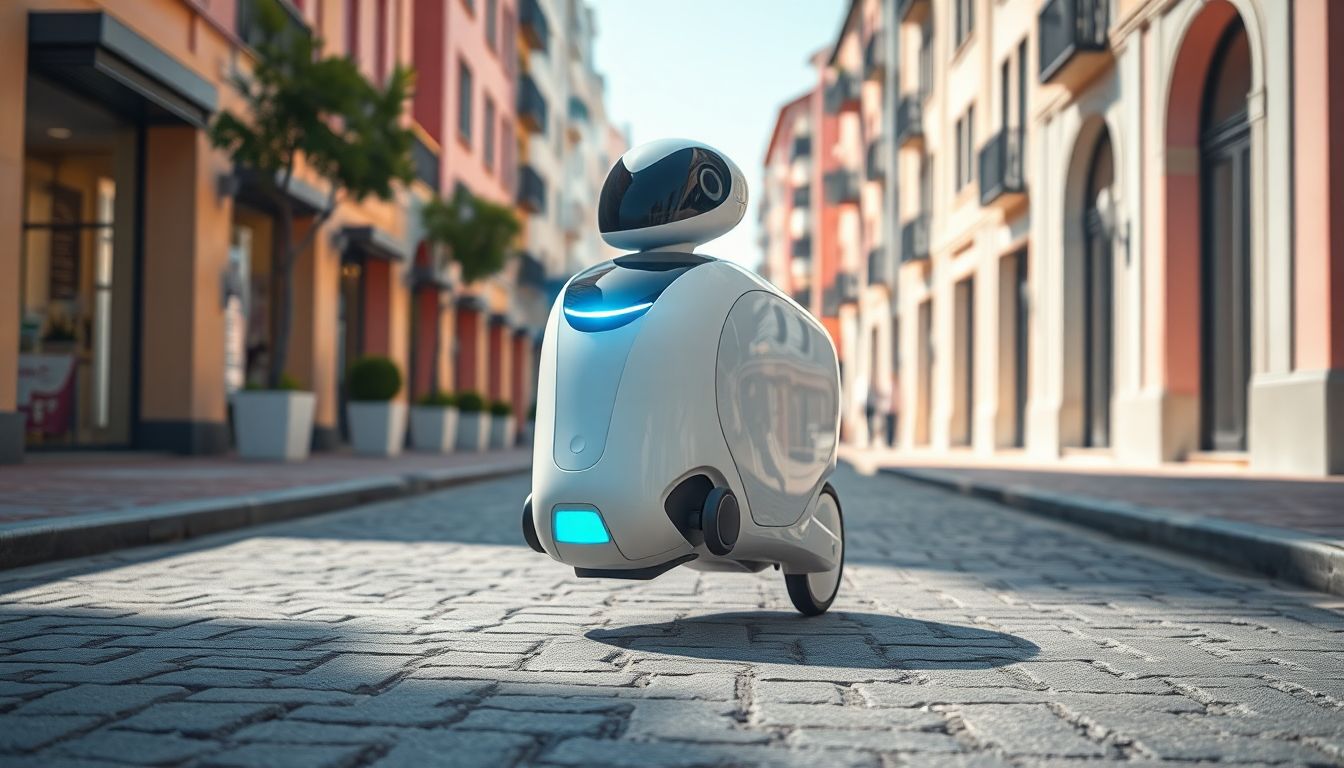Picture this: You’re swamped at work. Then a robot slides into your office, wheeling in the lunch you ordered. All automatic, no human driver, pure efficiency. These are no longer scenes from a sci-fi film. AI delivery robots are changing how deliveries are made, making them faster, cheaper, and cleaner.
How AI Powers Delivery Robots
These robots are driven by AI, which helps them make sense of the world and make smart decisions. Here’s a closer look at the tech that keeps them running.
Computer Vision and Object Recognition
Computer vision acts as the eyes of the robot. Cameras capture images, and AI learns to recognize objects like people, cars, or dogs. This technology helps the robot “see” and understand its environment, avoiding obstacles.
Path Planning and Navigation
AI algorithms plot the best routes for the robot, taking into account traffic, sidewalks, and obstacles. This allows the robot to find the fastest, safest path to its destination.
Sensor Fusion and Data Analysis
Robots use multiple sensors, such as LiDAR, GPS, and cameras. Sensor fusion combines this data to create a detailed representation of the robot’s surroundings. Real-time data analysis enables intelligent decision-making.
Advantages of AI Delivery Robots
AI delivery robots offer numerous benefits for businesses, customers, and the planet. Here are some of the key advantages:
Automation Saves Time, Effort, and Resources
Robots can deliver items faster and work around the clock. AI optimizes routes to prevent delays, making deliveries more efficient.
Reduced Labor Costs
Automating last-mile delivery reduces labor costs for businesses. It also frees up human workers for other tasks.
Enhanced Customer Experience
Customers can track their packages in real-time and schedule deliveries that fit their schedules. This improves satisfaction and convenience.
Challenges and Limitations
Despite their potential, AI delivery robots face several challenges that need to be addressed.
Regulatory and Legal Issues
Who is responsible if a robot causes an accident? Legislation surrounding autonomous vehicles is still evolving, and resolving these legal issues is essential.
Infrastructure Requirements
Robots need charging stations and may require dedicated lanes or routes. Building this infrastructure takes time and investment.
Public Acceptance and Safety Concerns
Some people may be wary of robots on sidewalks. Ensuring these robots are safe and reliable is crucial for gaining public trust.
Real-World Applications of AI Delivery Robots
These robots are already making an impact in various industries.
Food Delivery Services
Restaurants are using robots to deliver meals. Imagine a friendly bot bringing your pizza right to your door—it’s already happening!
E-commerce and Retail
Robots are delivering packages for online stores, speeding up delivery times and helping businesses compete.
Pharmaceutical and Healthcare Delivery
Robots can deliver medication and supplies to patients, especially those who have difficulty traveling. Imagine a robot delivering your prescription to your doorstep.
What’s Next for AI Delivery Robots?
The future of AI delivery robots looks promising. Here’s what to expect:
Smart City Infrastructure Compatibility
Imagine robots communicating with traffic lights and using data from smart city sensors. This would make deliveries even more efficient.
Enhanced AI Capabilities
AI is constantly improving. Future robots will be even more autonomous and capable of handling complex situations.
Expansion to New Industries
Robots could be used in agriculture or construction to transport tools and materials to job sites. The possibilities are endless.
Conclusion
AI delivery robots are revolutionizing last-mile delivery. They offer efficiency, cost savings, and convenience. While challenges remain, the potential is enormous. Get ready to see more of these robots in your neighborhood—the future of last-mile delivery is already here.














